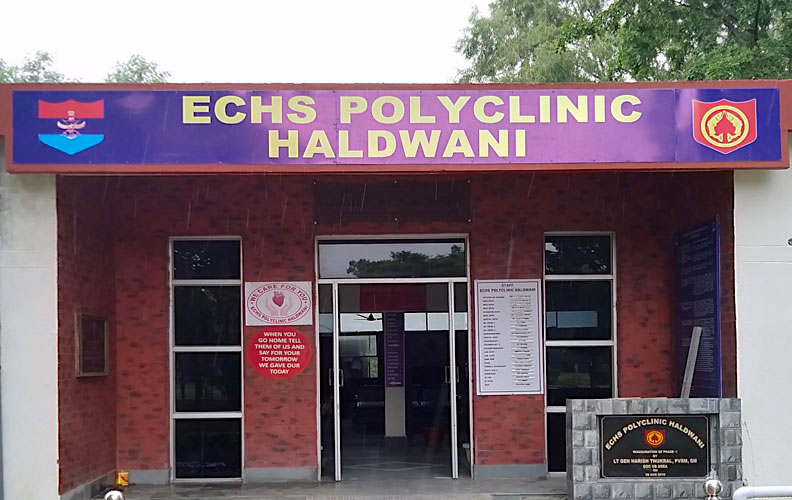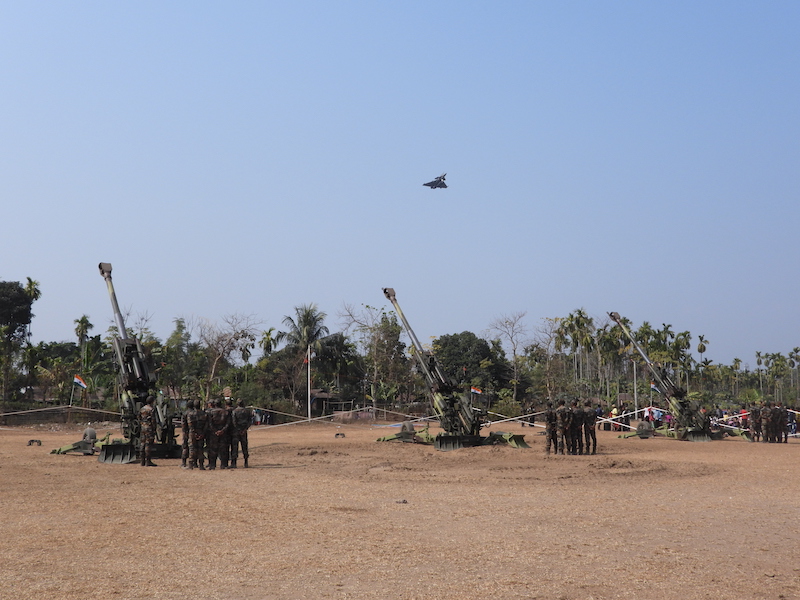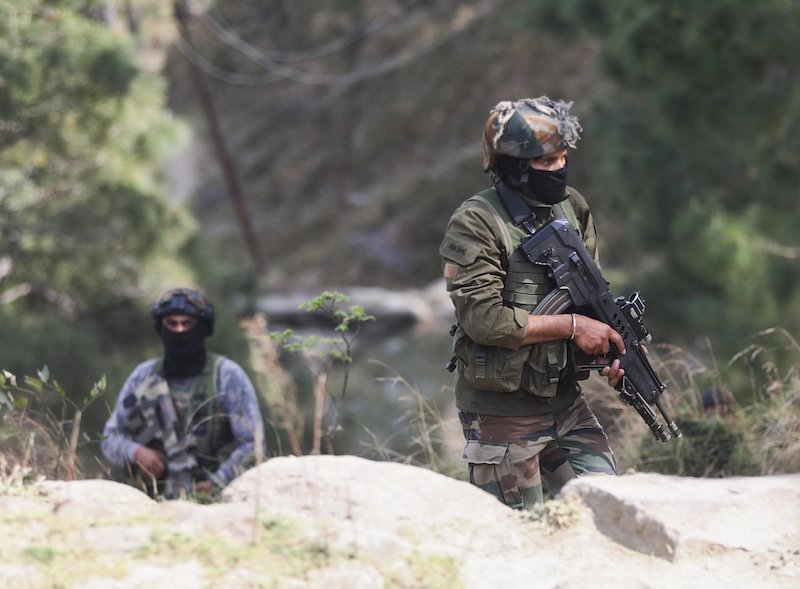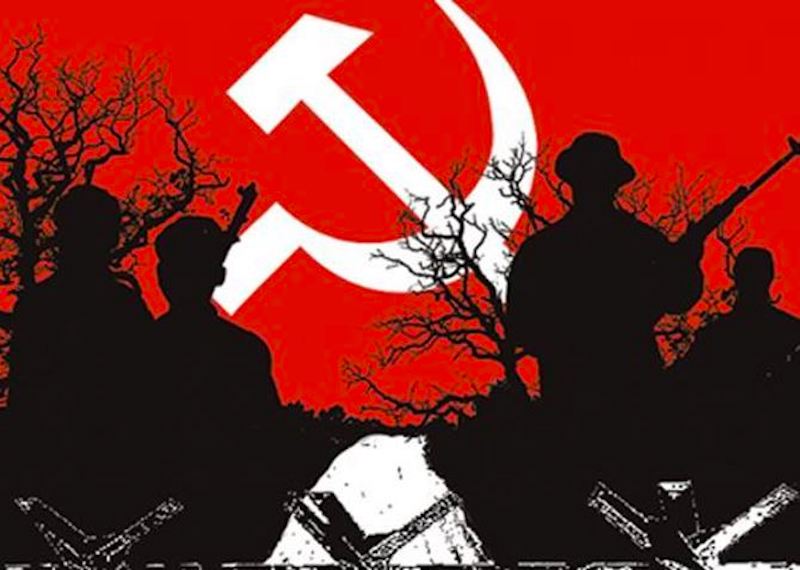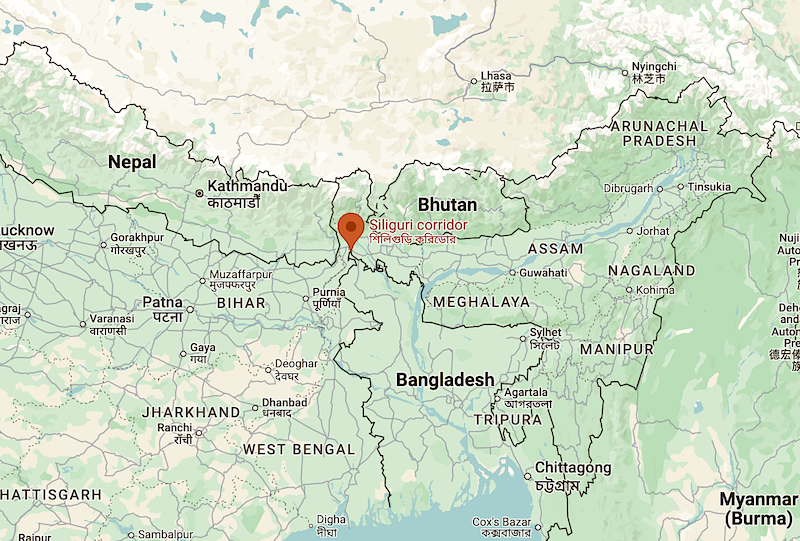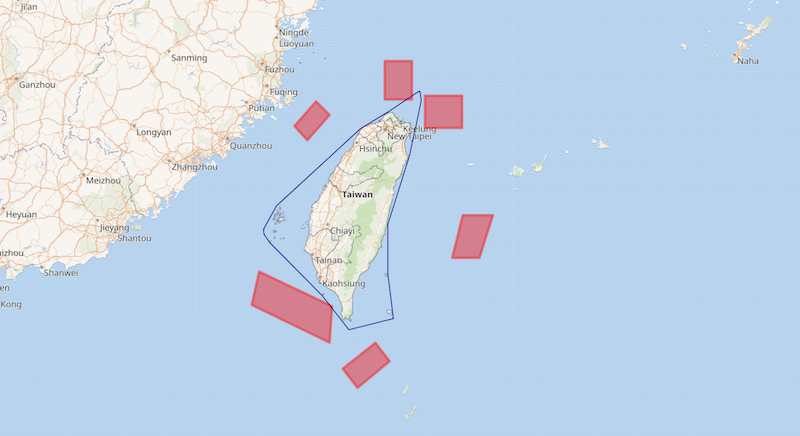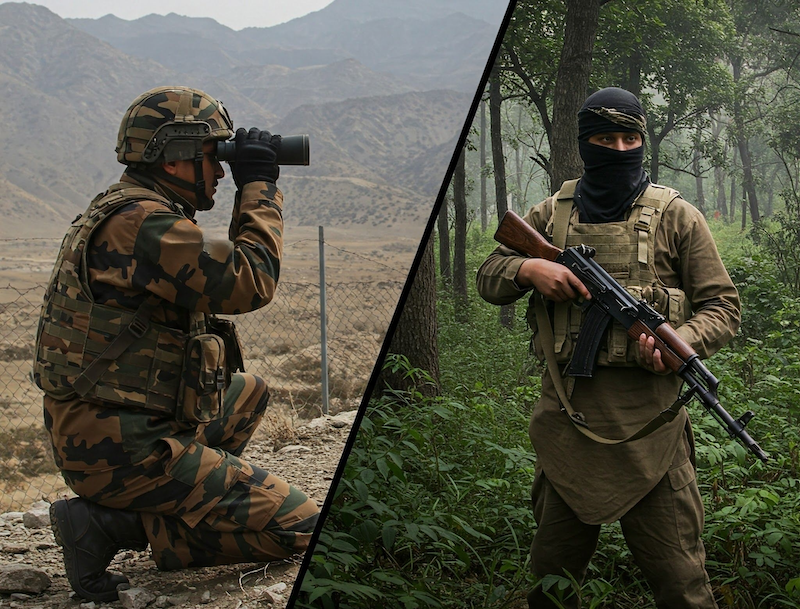 (India Sentinels image for representation.)
(India Sentinels image for representation.)
The heinous and dastardly attack on tourists in the beautiful Pahalgam meadows in the Kashmir valley on April 22, 2025, serves as a grim reminder that terrorism is not an area-specific phenomenon. Focusing on one particular area while ignoring others has its pitfalls and amounts to providing terrorists with a free run.
The incident in Pahalgam, which is deep inside the hinterland – far from both the line of control (LoC) and the international border (IB), reinforces that the whole of Jammu & Kashmir remains under intense scrutiny from cross-border strategists, especially after the uncalled-for rhetoric from Pakistan’s army chief, General Asim Munir, concerning Hindus and the two-nation theory. His remarks calling Kashmir the “jugular vein” align with the strategy to foment trouble anywhere in the state, highlighting the need for enhanced focus in both regions.
This attack also sends a broad message concerning the Amarnath Yatra, which also imposes caution upon those planning to participate in it. While the government has initiated diplomatic steps to respond to these killings, much more needs to be done. Every incident like Pahalgam calls for a consistent military retaliation policy to impose heavy economic and military costs upon Pakistan and force it to the negotiating table.
Read also: Intelligence, structured force deployment key to finish J&K militancy
Urgent Security Imperatives
There is an urgent need to strengthen the counter-infiltration and hinterland security grid. An in-depth analysis of the security apparatus in Jammu & Kashmir is imperative, as is the need to initiate an aggressive overhaul of intelligence mechanisms to strengthen human intelligence architecture. Structured situational hinterland security measures must be implemented in both Jammu and Kashmir regions. Had there been better intelligence and situational security, perhaps the Pahalgam incident could have been averted.
The erstwhile state and now the Union territory of Jammu & Kashmir has been in the grip of Pakistan-sponsored terrorism, militancy, and insurgency since the late 1980s. All regions, divisions, and districts have felt the heat of this scourge. No region can claim immunity from it. Analysis labelling a particular area as the centre of this scourge may be flawed or reflect a myopic appreciation of the situation to the advantage of the architecture supporting this low-intensity proxy war. Such analysis must be receiving in-depth military appreciation from cross-border strategists wearing Pakistani military insignia.
This proxy war in Jammu & Kashmir has experienced fluctuating fortunes but has never reached a point of closure or cessation – and is unlikely to do so unless cross-border support dries up. In the recent past, Kashmir was under an illusionary calm, which was shattered by the Pahalgam massacre. It also raises questions about professional analysis that led to the lowering of guard in the valley. Attempts at more such incidents in either region cannot be ruled out.
Different regions of Jammu – encompassing Rajouri, Poonch, Reasi, Udhampur, Doda, Kishtwar, and Kathua – continuously experience bouts of militancy at irregular intervals. Thus, this proxy war has neither been neutralized in Jammu & Kashmir nor are its embers dying. Those who hinted at neutralization set in complacency in the fight against militancy, and the Pahalgam terror attack is the result. The intelligence and security establishments must be prepared to fight this scourge holistically.
All indicators of the architecture sustaining this proxy war remain intact: cross-border patronage, strategization, sponsorship, support, and both overground and underground networks. Additionally, the lack of a structured human intelligence architecture and unstructured deployment of security forces in the hinterland is helping the architecture.
Read also: India must consolidate its western front to tame Pakistan
Strategic Analysis of Terrain and Vulnerability
In the past year, the entire Jammu region has seen a scattered spread of militant ambushes and terror incidents. This spread is well-strategized to ensure scattered, delayed knee-jerk responses, impose fatigue upon security forces, and spread a sense of insecurity over a wide spectrum. We must not treat militancy and/or terrorism in the entire Union territory as an area-specific phenomenon.
Attempts to focus the centre of gravity of militancy on a particular area, like Kathua, may be an overstatement. It may inadvertently divert attention from infiltration happening from north of the Chenab river, which gives militants freedom to move to any part of the Jammu region and beyond to Punjab and Himachal Pradesh.
The Border Security Force guards the IB south of the Chenab. The Indian Army guards the IB and the LoC north of the Chenab. The total length of the IB and LoC are prone to infiltration. The whole area needs focus. We cannot allow too much concentration on one area to relegate other infiltration-prone areas into oblivion, giving cross-border strategists opportunities to exploit such unfocused areas. Both the IB and the LoC need equal attention.
The terrain along the IB south of the Chenab is plain and undulating, interspersed with rivulets and nullahs, with farming activity right up to the fence. These rivulets and nullahs can be used as navigation aids. The terrain in the hinterland is a mix of plains, hills, forested areas with riverine gaps, and nullahs.
The terrain north of the Chenab along the IB and the LoC is a mix of plains, hills, and heavily forested areas prone to infiltration. Apart from that, parts of the IB north and south of the Chenab are prone to tunnelling. For hardened militants, no terrain presents an obstacle for movement and logistic support.
Read also: Spike in J&K militant attacks – Time to reanalyse and restrategize
Decoding Pakistan’s Ceasefire Violations
An analysis also needs to be conducted on the phenomenon of firing since February 2025 along the LoC despite the ceasefire agreement. This agreement has immensely helped Pakistan, allowing it to divert troops to its western border with Afghanistan, fight insurgency in Baluchistan, and train its personnel.
Why does Pakistan resort to firing along the LoC? It does so to facilitate infiltration by engaging posts along infiltration routes.
The continued firing indicates that attempts at infiltration from the LoC are continuing under cover of fire, and successful infiltration cannot be ruled out. More recently, after both Indian and Pakistani armies held a brigade commander-level flag meeting in Poonch, a junior commissioned officer, Subedar Kuldeep Chand of 9 Punjab, was killed while thwarting an infiltration bid in Akhnoor.
On April 23, 2025, less than 24 hours after the Pahalgam strike, an infiltration bid was made in Baramulla district under cover of fire along the LoC. It’s worth noting that the absence of breaches in the fence, also called the anti-infiltration obstacle system (AIOS), does not guarantee that infiltration is ruled out. Tunnelling from the IB north of the Chenab remains a possibility.
Pakistan wants to keep the Union territory of Jammu & Kashmir on the boil and is probing the LoC vigorously. Wherever it finds an opportunity, it will attempt to infiltrate. Imagining infiltration from the Kathua IB based upon militancy-related incidents in the hinterland of Kathua or Udhampur is misplaced and reflects too myopic an analysis. The complex phenomenon of this Pakistan-strategized proxy war needs broad-based analysis covering the entire IB and the LoC.
It is a fact that structured and heavily concentrated force deployment exists south of the Chenab along the entire IB. Additionally, the border is fenced under effective human and technical surveillance, including river and nullah gaps that are continuously monitored pre- and post-monsoon and kept under domination. No tunnelling has been detected. Thus, infiltration from the IB in Kathua is difficult but not ruled out.
However, as media narratives reveal, after recent militant strikes in Kathua district, the complete focus has shifted to the IB, since the incident occurred close to the Kathua IB. After such clamour, attention centred on the Kathua IB, relegating other areas to the background. Since the focus was on the Kathua IB, protocols demanded the formation of special teams to check every inch of ground to detect any infiltration, which also involves checking technical gadgets by independent agencies. Surely, the BSF must have conducted such checks.
There were red herrings and speculation about infiltration from the Kathua IB, but there seems to be no concrete evidence. Speculation without evidence is demoralizing for the men in uniform guarding the IB (read the BSF) as well as unjustified.
Read also: Robust HUMINT network is the key to defeat militancy in J&K
Evidence and Patterns of Cross-Border Activity
Let us study the pattern of infiltration and militancy in the Jammu region. In the series of militant attacks in Rajouri-Poonch in 2024, militants killed a soldier and injured four when they ambushed a convoy of the Indian Air Force in Poonch on May 4, 2024. In June 2024, militants targeted a bus carrying pilgrims and proceeding from Shivkhori cave towards the Mata Vaishno Devi shrine near Pauni, Reasi. During the attack, the bus lost control and plunged into a deep gorge, which resulted in the death of nine civilians and injuries to another 41.
Similarly, there have been incidents spread across the whole spectrum of the Jammu region, clearly indicating that militancy and infiltration are not area-specific, though intensity may vary from area to area.
In 2024 and 2025, there have been numerous incidents of cross-LoC movement into the Jammu region by women and men, who were apprehended after crossing over to the Indian side. For instance, one Shabnam B and her daughter crossed over in Poonch district but were handed over to the Army after being apprehended. In another incident, which took place in November 2024, Fatima B, a resident of a forward village in Kirni sector in Poonch district, crossed the LoC to Pakistan-occupied Kashmir.
These incidents establish that infiltration by militants and terrorists too cannot be ruled out.
Sporadic cross-LoC firing since February 2025 indicates infiltration attempts from the Pakistan-controlled side of Jammu & Kashmir. Nothing stops militants from reaching Kathua, Basantgarh, Doda, or Kishtwar after infiltrating north of the Chenab. Another important aspect is that militants take forested and rural routes after infiltration to reach their destination and execute their plans with overground support. Thus, there is a need to conduct special exercises to detect infiltration, including anti-tunnelling operations for the region north of the Chenab.
Read also: Bringing Jammu & Kashmir out of the quagmire of militancy
A Holistic Approach to Counterterrorism
Although the IB and the LoC north of the Chenab and beyond are well-structured and fortified, there is still a need to strengthen them with enhanced boots on the ground to plug gaps in domination and thwart infiltration attempts. Another aspect is structured deployment in the second and third tier after an in-depth analysis of the ground, based upon company or forward operating bases and the need for a robust human intelligence network.
Structured deployment of security forces and an effective human intelligence network have become prerequisites to fight militancy and terrorism – and without both, success in the fight against this proxy war with Pakistan will remain like a mirage in the desert.
Kathua’s proximity to Punjab means that militants proliferating towards Punjab cannot be ruled out. Both Jammu and Kashmir regions need separate unified commands presided over by the Union territory’s lieutenant governor with the chief minister as part of it, since no militancy/insurgency or terrorism can be eradicated without people’s support.
There is a need to strengthen the security grid all along the IB and the LoC since infiltration cannot be ruled out from anywhere. Focusing on the IB in Kathua and Samba regions while neglecting other areas is myopic. The IB in the north of the Chenab and the LoC need renewed focus to strengthen the counter-infiltration grid. Additionally, the second and third tiers also need strengthening.
Read also: Border guarding is much more than merely detecting tunnels
Unless a holistic approach, free from turf wars, is adopted to counter infiltration and fight militancy which switches to terrorism without warning and vice versa, the battle against scourge will remain half-hearted, despite men on the ground leaving no stone unturned in fighting it.
India needs to be active and not reactive in countering infiltration and terrorism. It must play aggressively without being on the backfoot if it wants to defeat Pakistan in its proxy war.
Disclaimer: The views expressed in the article are the author’s own and don’t necessarily reflect the views of India Sentinels.
Follow us on social media for quick updates, new photos, videos, and more.
X: https://x.com/indiasentinels
Facebook: https://facebook.com/indiasentinels
Instagram: https://instagram.com/indiasentinels
YouTube: https://youtube.com/indiasentinels
© India Sentinels 2025-26

